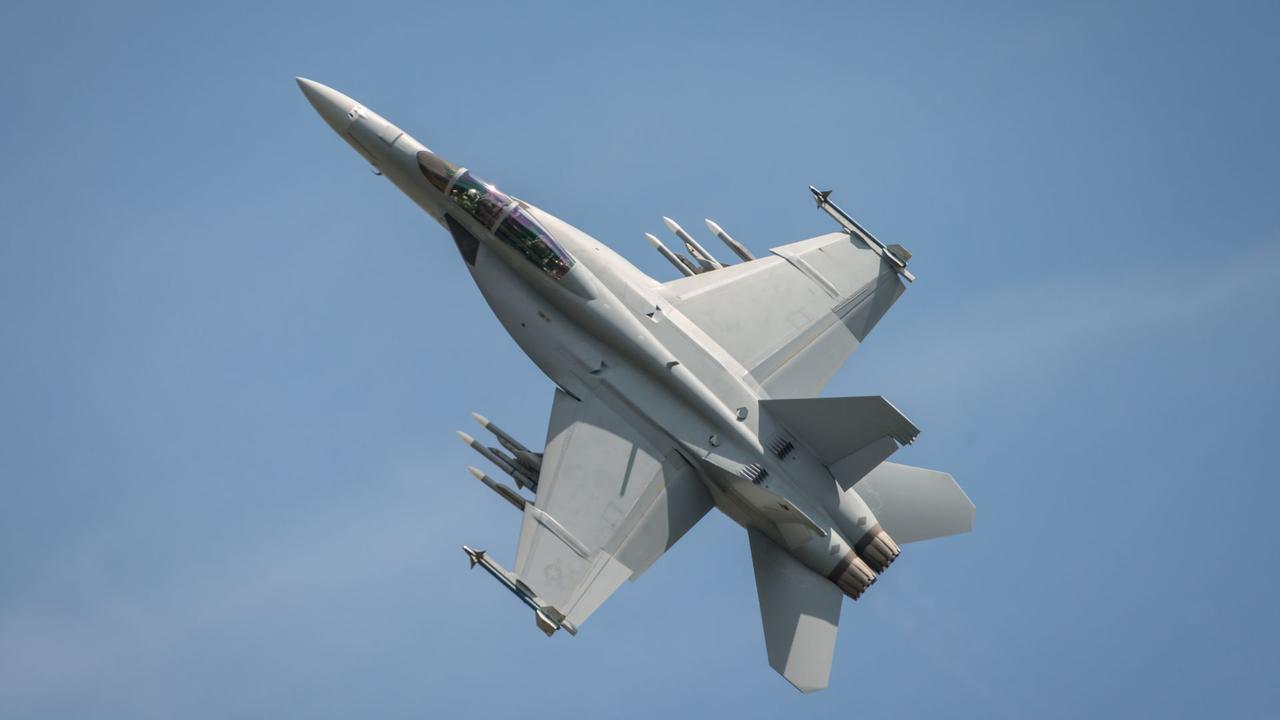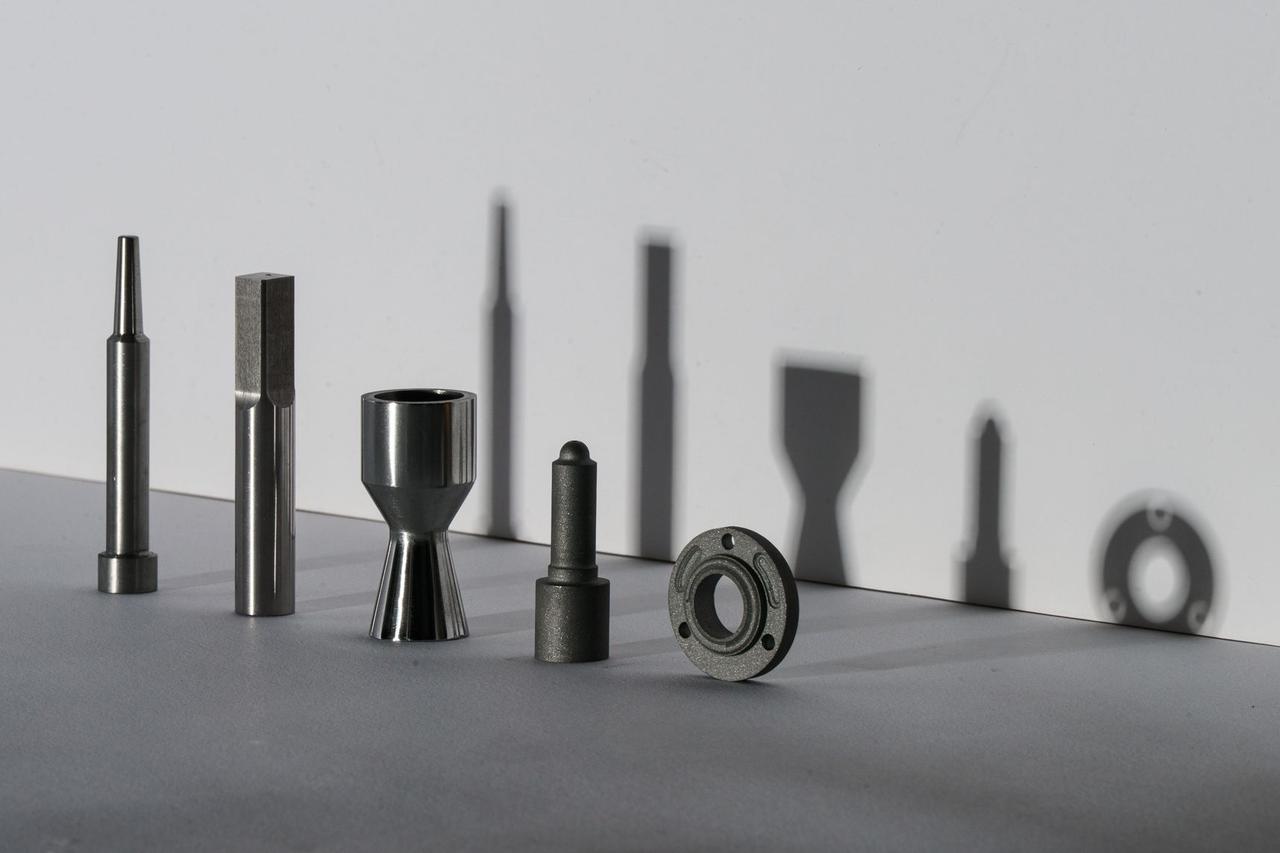AI-Driven Discovery of High-Temperature Shape Memory Alloys Could Revolutionize Fighter Jet Efficiency
2 Sources
2 Sources
[1]
New shape memory alloys could build more efficient US fighter jets
Currently, the system fighter jets use is comprised of heavy mechanical parts. This could change with the use of high-temperature shape memory alloys (HTSMAs). The HTSMAs would allow the jet to move with less weight and more efficiency, meaning more jets get ready to fly at a faster pace with optimal energy use. To date, shape memory alloys have been plagued with one problem: they are usually quite expensive. The scientists from the Department of Materials Science and Engineering, Texas A&M University, suggest that AI and high-throughput experimentation can be combined to accelerate materials discovery and reduce development costs. This means the process could be done faster, resulting in more efficient materials at an affordable cost. Designing new materials requires testing thousands of metal mixtures to find the right one, as even a tiny change can totally alter the way the material behaves.
[2]
High-temperature shape memory alloys could boost fighter jet efficiency and performance
In aerospace applications, high-temperature shape memory alloys (HTSMAs) -- materials capable of remembering and returning to their original shapes after heating -- are often constrained by high costs since they rely on expensive elements to function at elevated temperatures. Fighter jets like the F/A-18 need to fold their wings to fit on crowded aircraft carriers. The system that folds the wings relies on heavy mechanical parts. But with new lighter, smarter alloys, those movements could be done with less weight and more efficiency. That means more jets can be ready to fly, faster and with less energy wasted. The researchers have published their findings in the journal Acta Materialia. The research showcases how artificial intelligence (AI) and high-throughput experimentation can be combined to accelerate materials discovery and reduce development costs. This pioneering study sets the stage for a new era in functional alloy design -- faster, cheaper, and smarter. That means everything that can use this process could soon be made with materials that are not only more efficient but also more affordable for those seeking to save on costs. The team is being led by Department Head and Chevron Professor Dr. Ibrahim Karaman and Chevron Professor II Dr. Raymundo Arroyave, who have developed a data-driven approach to material discovery. "This work shows that we can design better high-temperature alloys not through expensive trial-and-error but through smart, targeted exploration driven by data and physics," said Karman. "This project is exciting as it shows the power of the advanced alloy development frameworks we have been developing in the past years." Arroyave added. Background Designing new metals usually takes a lot of time and money. Scientists must test thousands of metal mixtures to find the right one -- and even tiny changes, like adding just 0.1% more of one element, can totally change how the material behaves. With so many options, finding the correct combination for the alloy would be like guessing the right lottery numbers. To speed things up, researchers at Texas A&M University are using powerful computers and artificial intelligence. These tools help them predict how different metal mixtures would interact, so they don't have to test every single option in their labs. Instead, they utilize AI to help them concentrate their efforts on the more promising ones. "With advanced computational tools, we're not just speeding up alloy discovery -- we're reshaping how discovery happens," said Sina Hossein Zadeh, a Ph.D. student in the Department of Materials Science and Engineering. Research innovation The standout feature of this project is its integration of machine learning and experimental work through a framework known as Batch Bayesian Optimization (BBO). BBO allows scientists to iteratively refine their alloy predictions based on past experimental results, minimizing waste and maximizing discovery efficiency. "This framework not only speeds up discovery," Karaman says, "but also opens the door to tailoring alloys for specific functions, such as reducing energy loss or improving actuation performance in many applications." The goal is to make materials that move or change shape in response to something like heat or electricity -- kind of like muscles for machines. These special materials are called actuators, and they're often used in aerospace, robotics, and even medical devices. Challenges and the future Currently, the model explores alloying with copper and hafnium to enhance shape memory behavior and raise transformation temperatures. However, further research is needed to incorporate more elements and predict additional performance metrics, such as transformation strain -- how much the alloy can actually move or change shape during operation. According to Broucek, "The next frontier is to design alloys that not only transform at the right temperatures but also deliver meaningful strain in service. That's what will make them viable for aerospace and energy applications."
Share
Share
Copy Link
Researchers at Texas A&M University are using AI and high-throughput experimentation to accelerate the development of high-temperature shape memory alloys, potentially transforming fighter jet performance and efficiency.
AI-Driven Material Discovery for Aerospace Innovation
Researchers at Texas A&M University are pioneering a groundbreaking approach to developing high-temperature shape memory alloys (HTSMAs) that could revolutionize the aerospace industry, particularly in fighter jet design and efficiency. By leveraging artificial intelligence (AI) and high-throughput experimentation, the team aims to accelerate materials discovery while significantly reducing development costs
1
2
.The Promise of High-Temperature Shape Memory Alloys
HTSMAs are advanced materials capable of remembering and returning to their original shapes after being heated. These alloys hold immense potential for aerospace applications, offering a lighter and more efficient alternative to the heavy mechanical parts currently used in fighter jets
1
.For instance, fighter jets like the F/A-18 need to fold their wings to fit on crowded aircraft carriers. The current wing-folding system relies on heavy mechanical components. By incorporating HTSMAs, these movements could be achieved with less weight and greater efficiency, allowing more jets to be ready for flight faster and with reduced energy consumption
2
.
Source: Tech Xplore
Overcoming Cost Barriers with AI
Traditionally, HTSMAs have been constrained by high costs due to their reliance on expensive elements for high-temperature functionality. The research team, led by Dr. Ibrahim Karaman and Dr. Raymundo Arroyave, is addressing this challenge by developing a data-driven approach to material discovery
2
."This work shows that we can design better high-temperature alloys not through expensive trial-and-error but through smart, targeted exploration driven by data and physics," explained Dr. Karaman
2
.Innovative Research Framework
The standout feature of this project is its integration of machine learning and experimental work through a framework known as Batch Bayesian Optimization (BBO). This approach allows scientists to iteratively refine their alloy predictions based on past experimental results, minimizing waste and maximizing discovery efficiency
2
.Sina Hossein Zadeh, a Ph.D. student involved in the research, emphasized the transformative nature of their work: "With advanced computational tools, we're not just speeding up alloy discovery -- we're reshaping how discovery happens"
2
.Related Stories
Challenges and Future Directions
While the current model focuses on alloying with copper and hafnium to enhance shape memory behavior and raise transformation temperatures, further research is needed to incorporate more elements and predict additional performance metrics
2
."The next frontier is to design alloys that not only transform at the right temperatures but also deliver meaningful strain in service. That's what will make them viable for aerospace and energy applications," noted researcher Broucek
2
.Implications for the Aerospace Industry
The successful development of cost-effective HTSMAs could have far-reaching implications for the aerospace industry. By enabling the creation of lighter, more efficient fighter jets, these materials could enhance military readiness, reduce fuel consumption, and potentially lower operational costs
1
2
.
Source: Interesting Engineering
Moreover, the AI-driven approach to materials discovery demonstrated in this research could pave the way for similar advancements in other industries, accelerating innovation and reducing the time and cost associated with developing new materials
2
.As this research progresses, it may usher in a new era of smart, efficient, and affordable materials that could transform not only aerospace but also robotics, medical devices, and other fields requiring advanced actuator technologies
2
.References
Summarized by
Navi
[1]
Related Stories
AI Breakthrough Accelerates and Strengthens Titanium Alloy Production
08 Mar 2025•Science and Research

MIT-Led Team Develops AI-Powered Design Tools for Next-Gen Aerospace Components
09 Oct 2024•Science and Research

MIT Spin-off Foundation Alloy Revolutionizes Metal Manufacturing with AI-Compatible Technology
03 Jul 2025•Technology

Recent Highlights
1
AI Chatbots Sway Voters More Effectively Than Traditional Political Ads, New Studies Reveal
Science and Research

2
Trump signs executive order to override state AI laws despite bipartisan pushback
Policy and Regulation

3
OpenAI warns upcoming AI models will likely pose high cybersecurity risk with zero-day exploits
Technology





